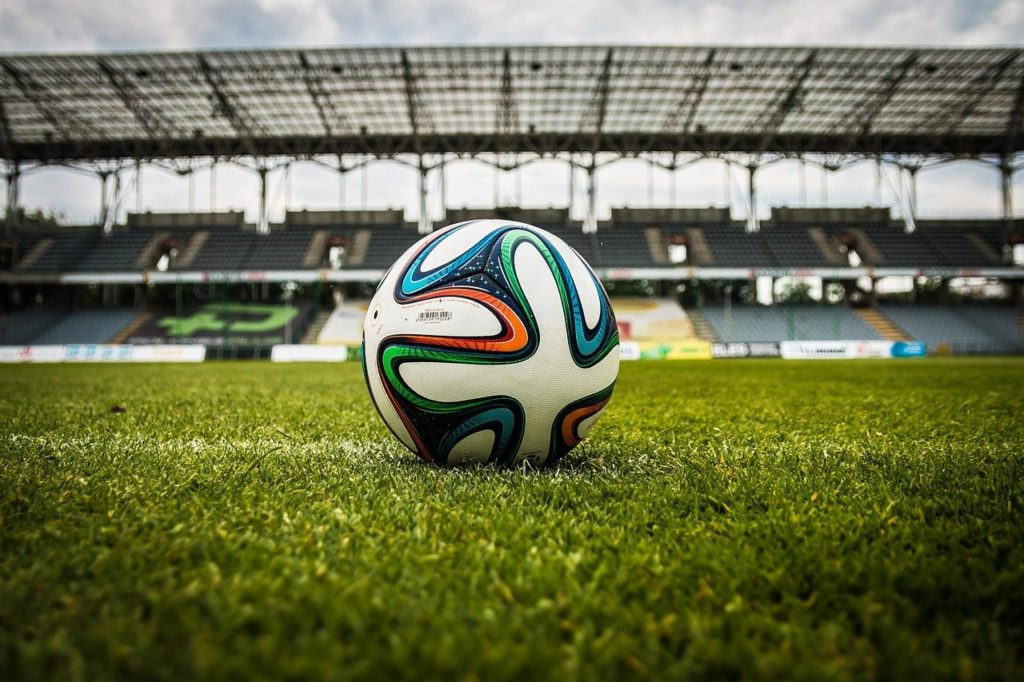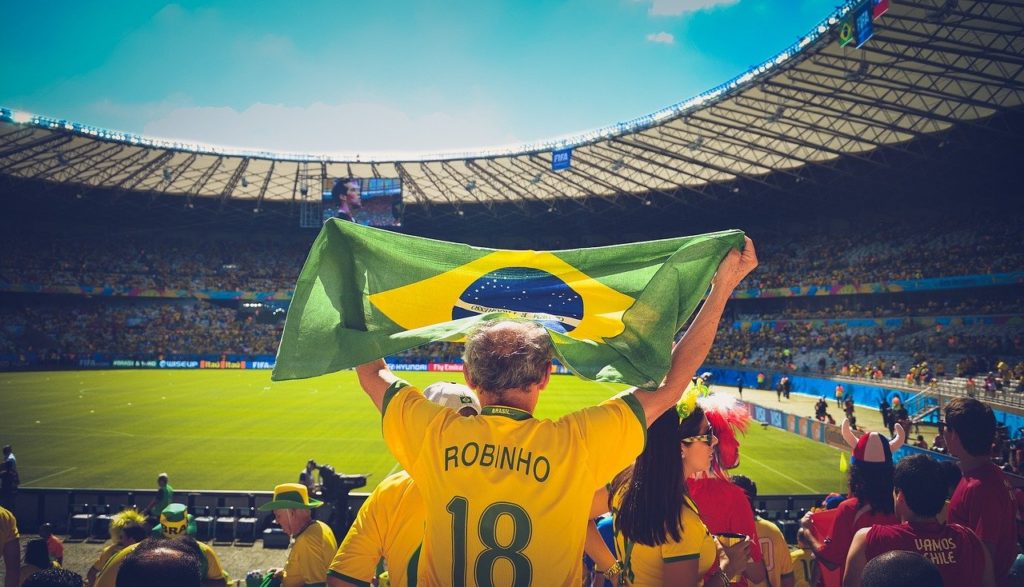La Copa América: The Historic Football Tournament Posted by sasha on Jun 30, 2021 in Spanish Culture, Sports
Es un momento muy emocionante para ser fanático del fútbol (It’s a very exciting time to be a football fan). There are two major tournaments going on at the moment – the Euro Cup as well as la Copa América. Have you ever heard of it? La Copa América es el principal torneo internacional oficial de fútbol en América del Sur (The Copa América is the main official international soccer tournament in South America). In this post I’ll introduce the tournament and share some highlights from this year as we get ready for the quarterfinals.
In South America, the governing body for football is CONMEBOL. If you’re wondering what the acronym stands for in Spanish, it’s la Confederación Sudamericana de Fútbol (the South American Football Confederation). It’s the smallest of the six continental confederations of FIFA with just ten member nations.
The confederation and the tournament both date back to 1916. Due to its storied history, the Copa America motto is “el torneo de selecciones más antiguo del mundo” (the oldest national team tournament in the world).
In those days, it was known as el Campeonato Sudamericano de Fútbol (the South American Football Championship). Argentina celebró un torneo para la celebración del centenario de la independencia (Argentina held a tournament for the celebration of the centennial of independence). They invited Chile, Brazil, and Uruguay to join. Uruguay ganó el primer campeonato (Uruguay won the first championship).
After the success of the tournament, the four nations got together and founded the confederation. Uruguay would go on to host the tourney the following year and win their bicampeonato (two-time championship) in front of a home crowd. Due to a flu outbreak in Brazil, the tournament didn’t take place in 1918. It came back in 1919 and happened every year for the next eight. Over those years other nations would join CONMEBOL, including Paraguay, Bolivia, and Peru.
For the first two decades, the title would switch hands mostly between Uruguay and Argentina, with the Brazilians winning a few times. It wasn’t until 1939 that another nation won. Perú organizaría el torneo ese año, donde ganó su primer campeonato (Peru would organize the tournament that year, where it won its first championship).
Throughout the 40s and 50s, the tournament wasn’t very organized. The schedule was very erratic for a while there. It happened a few years in a row, then there was a two-year break, then four years off, then two, then it went on every year for a few in a row. Some nations stopped caring and either sent a lesser team or none at all. Between 1967 and ’75, there wasn’t a single edition. El torneo regresó en 1975 cuando recibió el nombre la Copa América. (The tournament returned in 1975 when it got the name Copa America).
Over the years, Ecuador, Colombia, and Venezuela joined as well, bringing the total number of nations to ten. Ecuador y Venezuela son los únicos dos países que aún no han ganado un campeonato (Ecuador and Venezuela are the only two countries that have not won a championship yet).
At that time, they decided to have the tournament every four years in no particular nation. The games happened throughout the year in every country until 1987. At that time, CONMEBOL decided to go back to having a host nation and a bi-annual tournament.
That year, Argentina hosted the Copa America for the first time in 28 years. Fresh off a 1986 World Cup win with their star player Diego Maradona, they were heavy favorites. Imagine the disappointment from the Argentinian fans when their squad lost to Uruguay in the semi-finals. They got redemption four years later by winning the tournament in Chile – their first championship in 32 years.
Two years later, the tournament got a new format. Junto con los diez equipos habituales, invitaron a otros dos países: México y los Estados Unidos (Along with the usual ten teams, they invited two other countries – Mexico and the United States). Mexico has won 2nd place twice, the only non-CONMEBOL nation to do so. Over the years, other teams that have been invited include Costa Rica, Honduras, Qatar, and Japan.
Brazil would dominate the tournament for many years, winning four out of five in 1997, 1999, 2004, and 2007. A massive upset by Honduras in the 2001 edition kept them from making it five in a row and helped host nation Colombia win their first championship. Speaking of firsts, Chile finally got one in 2015 on their 7th time hosting the tournament.
The next year marked the 100th anniversary of the tournament. Called la Copa América Centenario, the event was held in the US and featured 16 teams. It was a commemorative edition of the tournament, which Chile won to become the 4th nation to win back-to-back championships.
Brazil hosted in 2019 and took home their 9th championship. While that’s impressive, they still trail Argentina who has 14 and Uruguay, who has won the tournament the most times at 15.
Due to the COVID pandemic, the 2020 edition was postponed a year. It was meant to be hosted by Colombia and Argentina, but eventually got moved to Brazil due to protests in Colombia and COVID-related issues in Argentina.
La fase de grupos ha terminado y ahora toca los cuartos de final (The group stage is finished and now it’s time for the quarterfinals). Here are some highlights from the recent game between Argentina and Bolivia:
This weekend there will be four different matches: Peru vs. Paraguay, Brazil vs. Chile, Uruguay vs. Colombia, and Argentina vs. Ecuador. ¿Qué equipo ganará la Copa América? (Which team will win the Copa America?). Leave a comment and let us know what you think!

Build vocabulary, practice pronunciation, and more with Transparent Language Online. Available anytime, anywhere, on any device.





